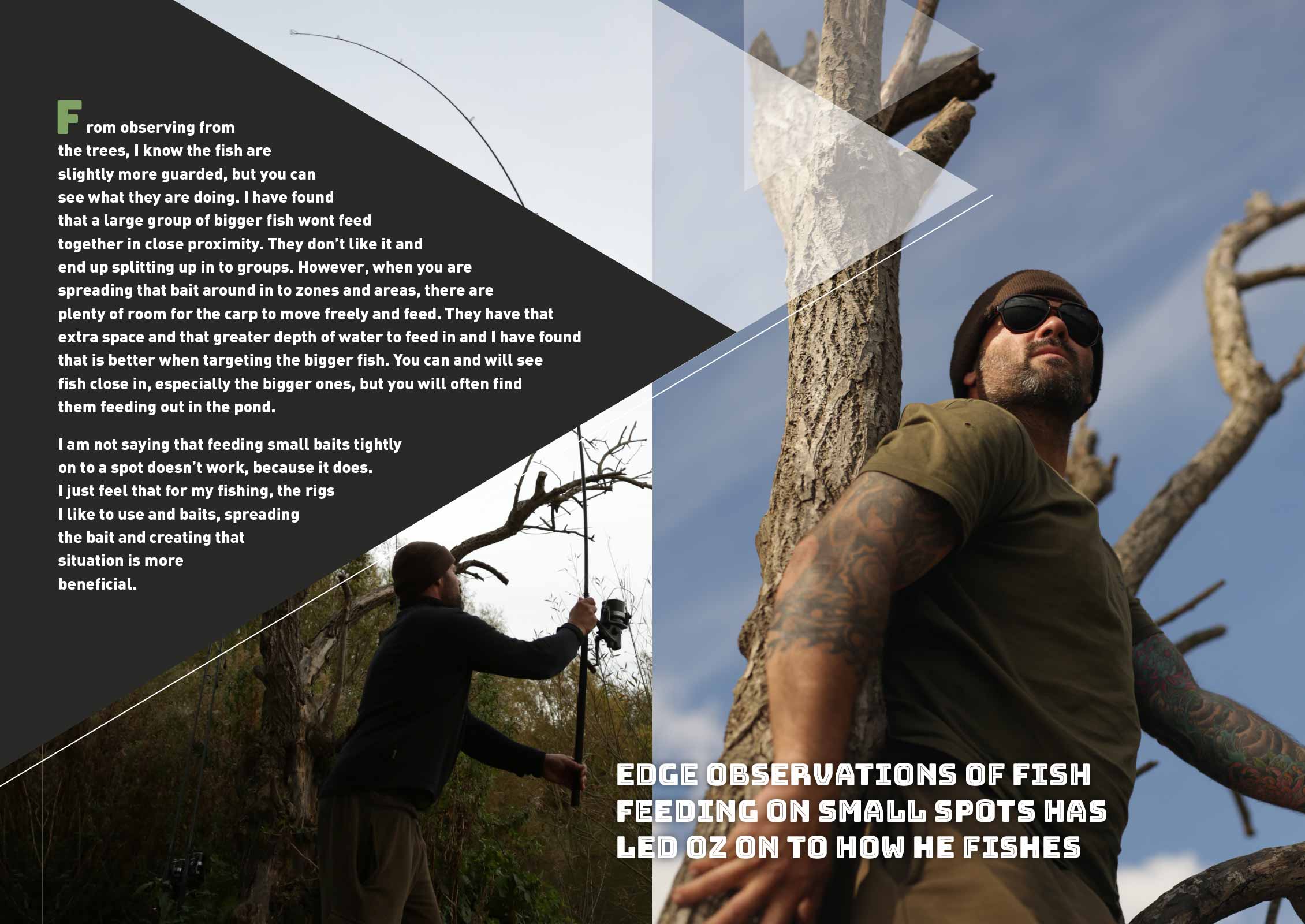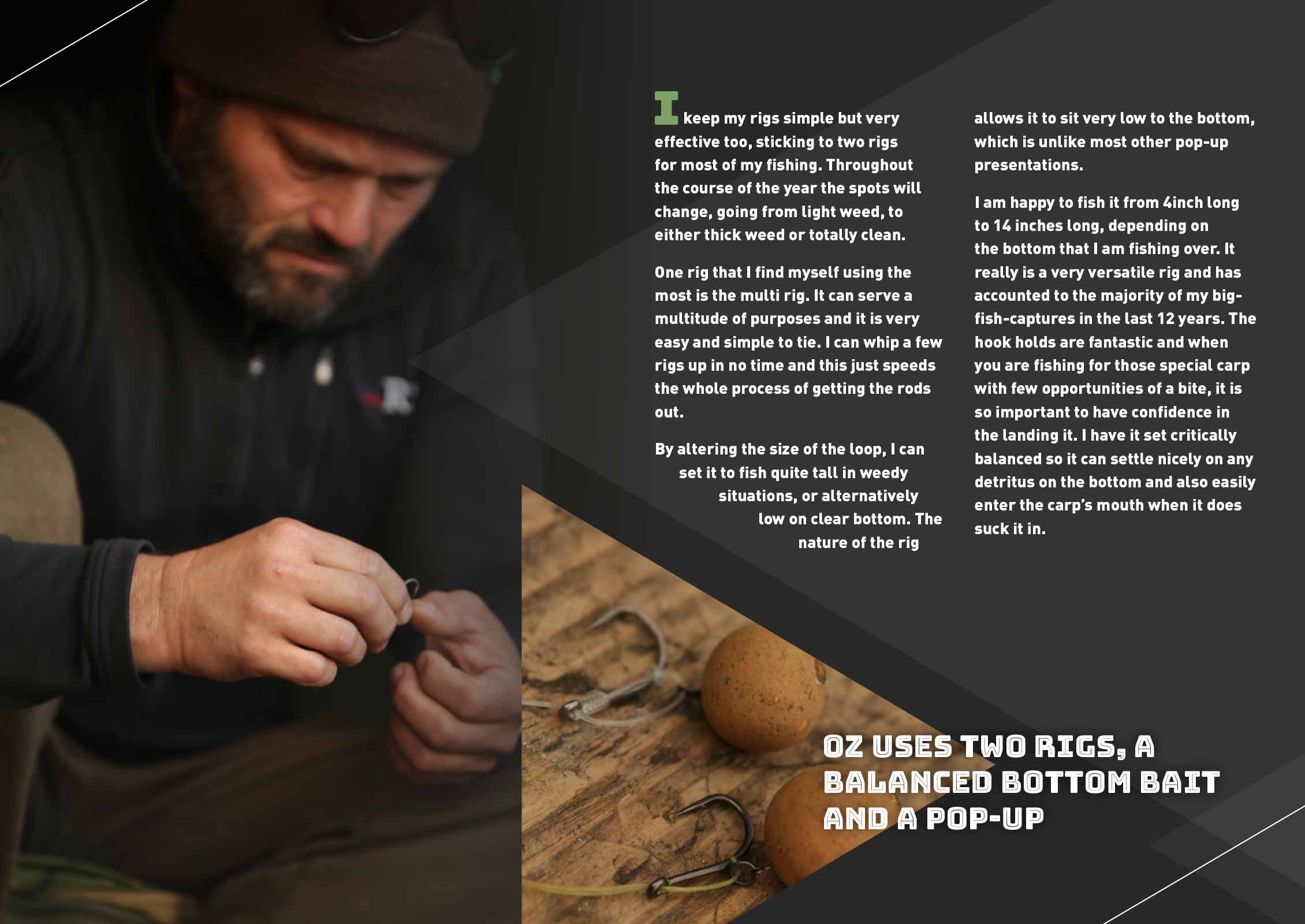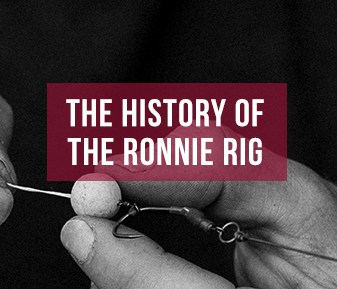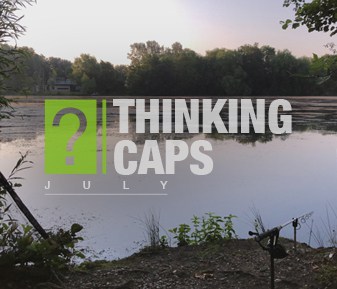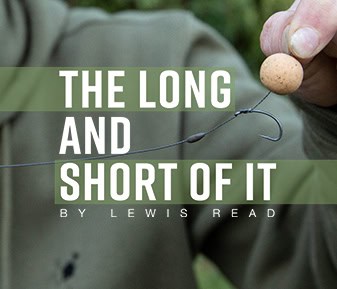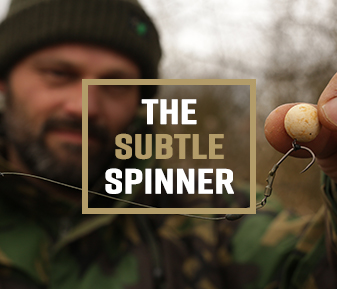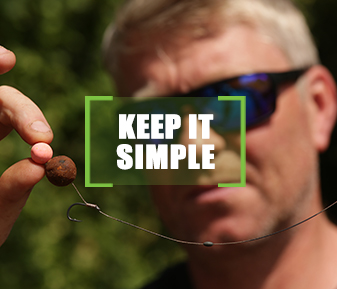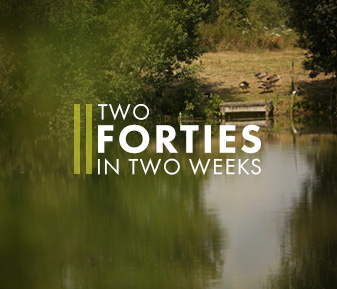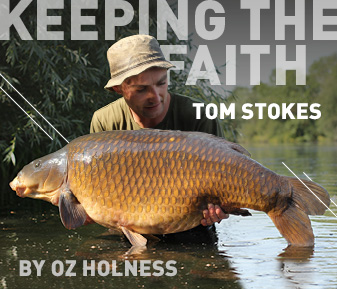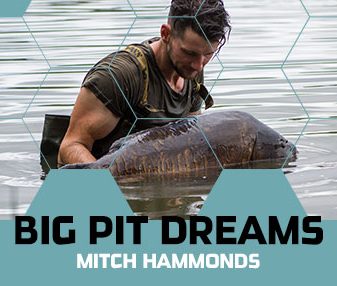Gaz Fareham explains why the Soft Boom Hinge aka 'The Cobra' is his go to rig - sharing his vast knowledge on the most effective set up to catch bites.



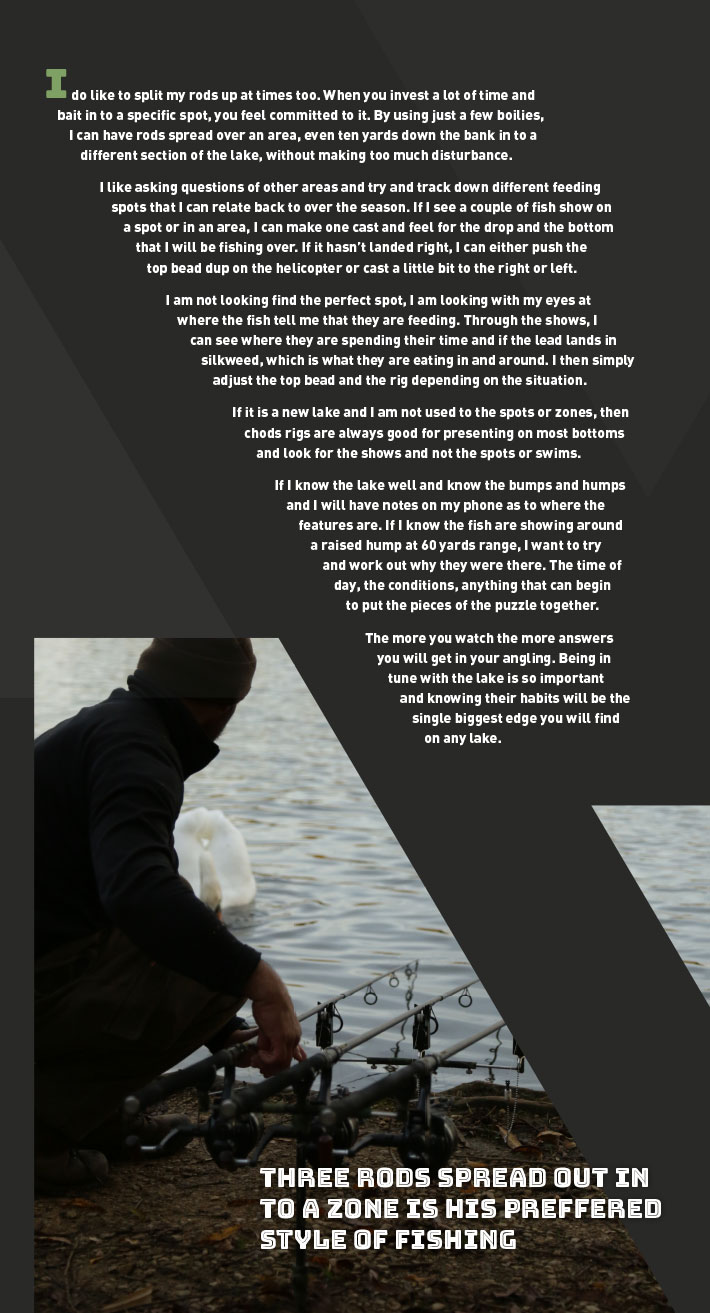


Oz Holness - Big Boilies for Big Carp // Text Only
Boilie fishing, roaming around, travelling light and going on your instinct and what you see, really does bring the hunter instinct out of you. It doesn’t feel like camping in a swim, hoping that your delicious bucket of goodies will lure your targets in.
I like to grab the barrow and go hunting for my quarry, with stealth and precision. This is what I have grown up with, knowing these traits and being able to execute them well will put you in good stead to achieve what you set out to do.
I have been fishing for a big fish for a while now and feel that I have grown a wealth of knowledge and understanding when it comes to trying to catch them. There are many forms of boilie fishing, which is my preferred style of angling, but one stands out to my as my favourite and technique that has helped me catch big carp from a number of tricky venues.
In a normal circumstance, I like to use a bigger spread of bait. If I can, I try and avoid the Spomb as much as possible and use the throwing stick. I know this can be hard sometimes, especially with the Gulls, but that spread of boilies is something that the fish are not seeing as often anymore.
I tend to wait until the hours of darkness to get the bait out. It doesn’t need to be accurate, that’s the whole baiting situation you are trying to create. By feeding a tennis court sized area, the fish will be moving round and seeking out the baits.
I try to have a good idea roughly where I am fishing, whether it be a gully or a bar, but I will spread the baits around where the rigs are going to be. I don’t want to concentrate the carp in to feeding on a small confined space.
I want to give the bigger fish move to room and build confidence in the situation. I found that this makes rig choices much easier. I think that once you go down the smaller baits route, the harder it becomes to get anything going on anything else. The stand out factor though, is that it is much harder to catch a carp over small items as it is over bigger baits such as boilies.
I want to use the biggest hook that I can get away with and in past experience, I have found the bigger the hook the better the hook holds and the improvement of hook to land ratio.
When you use smaller baits, the carp are fixated to the spot and they are not moving around. This is limiting the efficiency of the rig and there is a great chance that they will be picking you up and spitting you out regularly. In that tight situation, they can feel a lot more in my opinion and they can deal with what you putting out much better.
From observing from the trees, I know the fish are slightly more guarded, but you can see what they are doing. I have found that a large group of bigger fish wont feed together in close proximity. They don’t like it and end up splitting up in to groups. However, when you are spreading that bait around in to zones and areas, there are plenty of room for the carp to move freely and feed. They have that extra space and that greater depth of water to feed in and I have found that is better when targeting the bigger fish. You can and will see fish close in, especially the bigger ones, but you will often find them feeding out in the pond.
I am not saying that feeding small baits tightly on to a spot doesn’t work, because it does. I just feel that for my fishing, the rigs I like to use and baits, spreading the bait and creating that situation is more beneficial.
I do like to split my rods up at times too. When you invest a lot of time and bait in to a specific spot, you feel committed to it. By using just a few boilies, I can have rods spread over an area, even ten yards down the bank in to a different section of the lake, without making too much disturbance.
I like asking questions of other areas and try and track down different feeding spots that I can relate back to over the season. If I see a couple of fish show on a spot or in an area, I can make one cast and feel for the drop and the bottom that I will be fishing over. If it hasn’t landed right, I can either push the top bead dup on the helicopter or cast a little bit to the right or left.
I am not looking find the perfect spot, I am looking with my eyes at where the fish tell me that they are feeding. Through the shows, I can see where they are spending their time and if the lead lands in silkweed, which is what they are eating in and around. I then simply adjust the top bead and the rig depending on the situation.
If it is a new lake and I am not used to the spots or zones, then chods rigs are always good for presenting on most bottoms and look for the shows and not the spots or swims.
If I know the lake well and know the bumps and humps and I will have notes on my phone as to where the features are. If I know the fish are showing around a raised hump at 60 yards range, I want to try and work out why they were there. The time of day, the conditions, anything that can begin to put the pieces of the puzzle together.
The more you watch the more answers you will get in your angling. Being in tune with the lake is so important and knowing their habits will be the single biggest edge you will find on any lake.
When it comes to baits, I use the biggest baits I can. I like 20mm boilies for a number of reasons. Firstly, not many other anglers seem to use them, which straight away gives you an advantage over others, because lets face it, most lakes nowadays you are against them as much as the carp.
I also find that they aid with the rigs too, with it being such a big and heavy bait, the carp has to really such hard to get it in its mouth. If they are swimming round picking up 20mm baits, that takes a lot of effort and there feeding becomes more aggressive as apposed to sift feeding, which happens with the smaller baits.
I guess the average sized bait that most people would use would be between 14-16mm, so being different will always help you catch more carp in my opinion. I do like the bigger baits in the warmer months and will often scale down to the smaller ones in the winter.
A 20mm is great for getting out in the stick too. I can get them out at a decent range even in tricky conditions too. If I were to try and scatter 12mm boilies with a 30mph crosswind it would be a big problem, but the larger baits can take that sort of abuse.
A lot of anglers struggle with choosing a bait for the winter months. If I am staying on a water that I have been fishing for the whole season, I will stick to the same bait. This will be more likely be the fishmeal bait. If I have put all that work and effort in, the last thing I want to be doing is changing. The one thing that you should change is the quantity.
I have had my best winter ever fishing on a tricky pit with Fishmeals too. They recognised that food source and that’s what’s important. If I were going one somewhere for the winter and hadn’t baited it in the autumn, then maybe a milk protein bait such as the Manilla may be more suitable.
The key is solubility and the ability for the carp to digest the bait properly in the colder months. Bait is something that you shouldn’t have to worry about, stick to something with a good track record in the colder months and you wont go far wrong.
I keep my rigs simple but very effective too, sticking to two rigs for most of my fishing. Throughout the course of the year the spots will change, going from light weed, to either thick weed or totally clean.
One rig that I find myself using the most is the multi rig. It can serve a multitude of purposes and it is very easy and simple to tie. I can whip a few rigs up in no time and this just speeds the whole process of getting the rods out.
By altering the size of the loop, I can set it to fish quite tall in weedy situations, or alternatively low on clear bottom. The nature of the rig allows it to sit very low to the bottom, which is unlike most other pop-up presentations.
I am happy to fish it from 4inch long to 14 inches long, depending on the bottom that I am fishing over. It really is a very versatile rig and has accounted to the majority of my big-fish-captures in the last 12 years. The hook holds are fantastic and when you are fishing for those special carp with few opportunities of a bite, it is so important to have confidence in the landing it. I have it set critically balanced so it can settle nicely on any detritus on the bottom and also easily enter the carp’s mouth when it does suck it in.
The only time that I wont use the multi-rig is if I get a really firm drop and the bottom seems to be polished off. This normally happens in the summer and towards the back end of the year. The fish would have been clumped on bright ones and will have begun to really dig out and search for food.
This is when I use the balanced bottom bait presentation, or the Amnesia-D rig as people know it. The rig is a stiff nylon and involves a balanced bait on a flexible and good sized D. If I am feeding Krill boilies, I will use a matching Krill Wafter on the hair. I may change this to a white one in the winter months, but the mainstay and basics of it all remain the same. They will still have the same attractor package as the baits that I am feeding, but they offer that visual presence too, which in the colder months can only help in my eyes.
I have briefly touched on helicopter systems before, but I truly believe it can be the most simple and effective lead system around. I see a lot of people chopping and changing, but to me the helicopter offers me everything I need. If the bottom is dirty, I can lift the top bead up. If its clean, I can pull it down. If I need to drop the lead I can do, it really does cover most situations.
Its another thing that I don’t have to think about when I’m fishing. I know that my bait, rigs and lead arrangements work, all I need to do know is find the fish.





